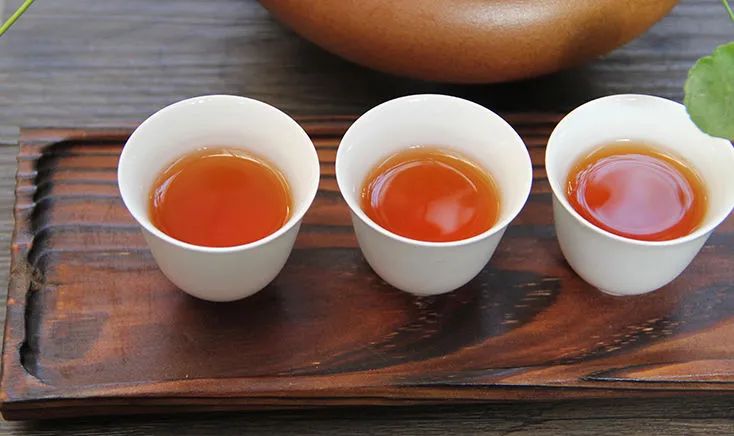
Cinnamon, also known as Yugui (玉桂), Mugui (牡桂), Yushu (玉树), Daguai (大桂), Lagui (辣桂), Pingan Tree (平安树), and Chinese Cassia (中国桂皮), is the dried bark of the Cinnamomum plant from the Lauraceae family. It is harvested in autumn and dried in the shade. Cinnamon has the properties of warming the body, assisting yang, returning fire to its source, dispelling cold, alleviating pain, and invigorating blood circulation. It can be used for conditions such as impotence, cold uterus, cold pain in the lower back and knees, kidney deficiency with wheezing, yang deficiency with dizziness, red eyes and sore throat, cold pain in the heart and abdomen, cold-induced vomiting and diarrhea, cold hernia, and menstrual disorders including dysmenorrhea. Let’s explore the effects and uses of cinnamon, as well as its brewing methods and techniques!

01
Effects and Uses of Cinnamon
1. Refreshing and Enhancing Mental Clarity
Drinking cinnamon can refresh the mind and enhance mental clarity, which is well-known. However, the refreshing effects can vary among different varieties, with cinnamon being particularly effective due to its high caffeine and alkaloid content, which can stimulate the nerves and increase cognitive activity.
2. Promoting Intellectual Development
The pH level of the brain’s fluids is directly related to intelligence, and cinnamon is an alkaline beverage that can help regulate this balance, thereby enhancing IQ. Additionally, cinnamon contains vitamins, amino acids, and polyphenols, which are closely related to brain development and can promote intellectual growth, making individuals smarter.
3. Cleansing the Intestines, Detoxifying, and Aiding Weight Loss
Cleansing the intestines and detoxifying is also a primary function of cinnamon. It is rich in flavonoids, which not only kill bacteria and detoxify but also promote the breakdown and metabolism of toxins in the body, inhibit fat absorption, and shorten bowel transit time. Regularly brewing and drinking cinnamon can help cleanse the intestines and aid in weight loss.
4. Tonifying the Middle and Boosting Qi
Tonifying the middle and boosting qi to alleviate physical weakness is a primary effect of cinnamon. It can relieve insufficient middle qi and physical frailty, accelerate metabolism, and enhance blood circulation. Regular consumption can improve physical fitness and strengthen the body’s resistance to disease. Additionally, cinnamon has a significant role in invigorating blood and regulating menstruation, helping to prevent and alleviate menstrual irregularities and supporting women’s health during their menstrual periods.

02
Brewing Methods and Techniques for Cinnamon
1. Choosing Tea Utensils
For brewing cinnamon tea, both purple clay teapots and white porcelain gaiwans are suitable. However, I personally prefer the white porcelain gaiwan for its aesthetic appeal—white cup with orange-yellow tea, simple yet elegant. The bright yellow color of the tea is very inviting, and the gaiwan is convenient for brewing, though one must handle it carefully to avoid burns.
For experienced users, a purple clay teapot is more appropriate, but I do not recommend it for beginners.
2. Warming the Teapot and Cups
It is essential to follow a good principle when brewing tea: first, boil water to 100°C. This high temperature is necessary to fully express the flavor of the tea. Rinse the gaiwan and tea cups with the boiled water to remove any odors and ensure the purity of the tea’s aroma and flavor. After warming the cups, discard the water.
3. Adding Tea
Use scissors to cut open the tea bag instead of tearing it by hand, as cinnamon tea is quite brittle and can easily break. Use scissors to carefully cut along the edge of the bag and add 8g of cinnamon tea to the gaiwan. Do not use too much tea, as it will make the brew too strong and mask the original flavor, leading to slight bitterness. Conversely, using too little will result in a bland taste. The ideal amount is 8g for a gaiwan with a capacity of 110ml.
4. Brewing
Pour boiling water into the gaiwan, but do not use the water immediately after boiling; wait for the bubbles to dissipate.
When brewing, pay attention to the details of pouring water. Pouring in a circular motion along the wall of the gaiwan is one of the best methods to achieve the flavor of cinnamon tea. This technique ensures that the cinnamon tea leaves are evenly soaked in the boiling water, allowing for perfect interaction with water, temperature, and air to fully present the flavor. This facilitates the enjoyment of aroma and taste.
When pouring, find a point on the edge of the gaiwan and pour in a clockwise circular motion. Do not pour too forcefully; maintain a steady flow to avoid overflowing and splashing the leaves, which can affect the brewing process.
5. Straining the Tea
After brewing, the next step is to strain the tea. Be mindful of the timing; straining too quickly will result in a weak brew, while straining too slowly will make it too strong. For the first three brews, after pouring water, steep for 5 seconds before straining. Ensure to drain the tea completely after each brew. After the third brew, increase the steeping time by 5 seconds for each subsequent brew.
When straining, tilt the gaiwan to pour the tea into a fairness cup, ensuring an even distribution of tea before pouring it into individual cups for drinking.

——Previous Reviews——
|
Health |
Effects and Uses of Chrysanthemum and Cassia Seed Tea |
|
Wellness |
Effects and Uses of Kudzu Root Powder |
|
Encyclopedia |
Effects and Uses of Cassia Seed Tea |
|
Science Popularization |
Effects and Uses of Notoginseng Powder |
|
Knowledge |
Effects and Uses of Deer Antler Glue |
END
Dear reader, if our article has been helpful to you,please mark us as a star★! This way, you won’t miss our daily updates!

【Disclaimer】: This article is sourced from the internet, and copyright belongs to the original author. Please indicate the source when reprinting. Sharing this article is for the purpose of dissemination and learning exchange, and we do not take responsibility for the views expressed. The various dietary therapies, prescriptions, and remedies mentioned are for reference and learning only; non-professionals should not use them blindly! The advertisements in the article are automatically generated by the system and are unrelated to this account. If you have any questions, please leave a message online, and we will address it as soon as possible. Thank you.
Click 【to view】 to promote health and share knowledge~👉

